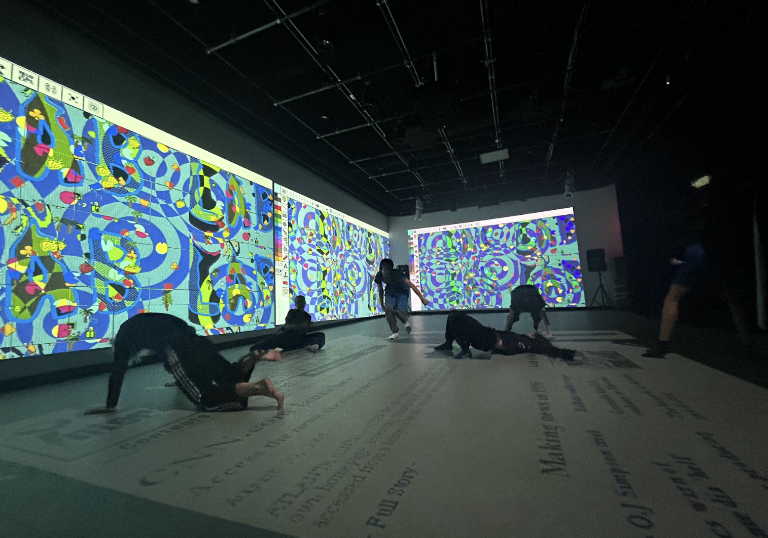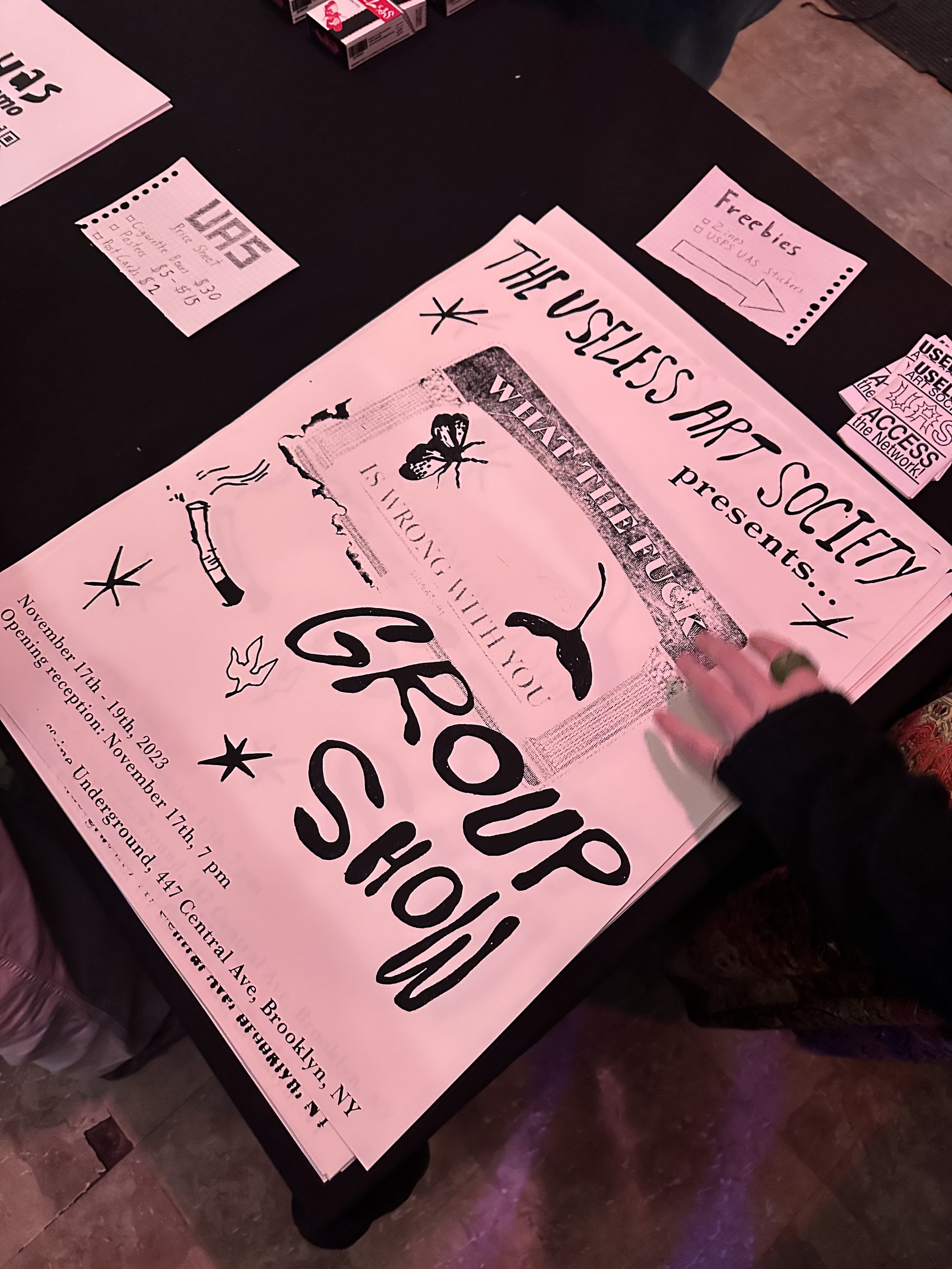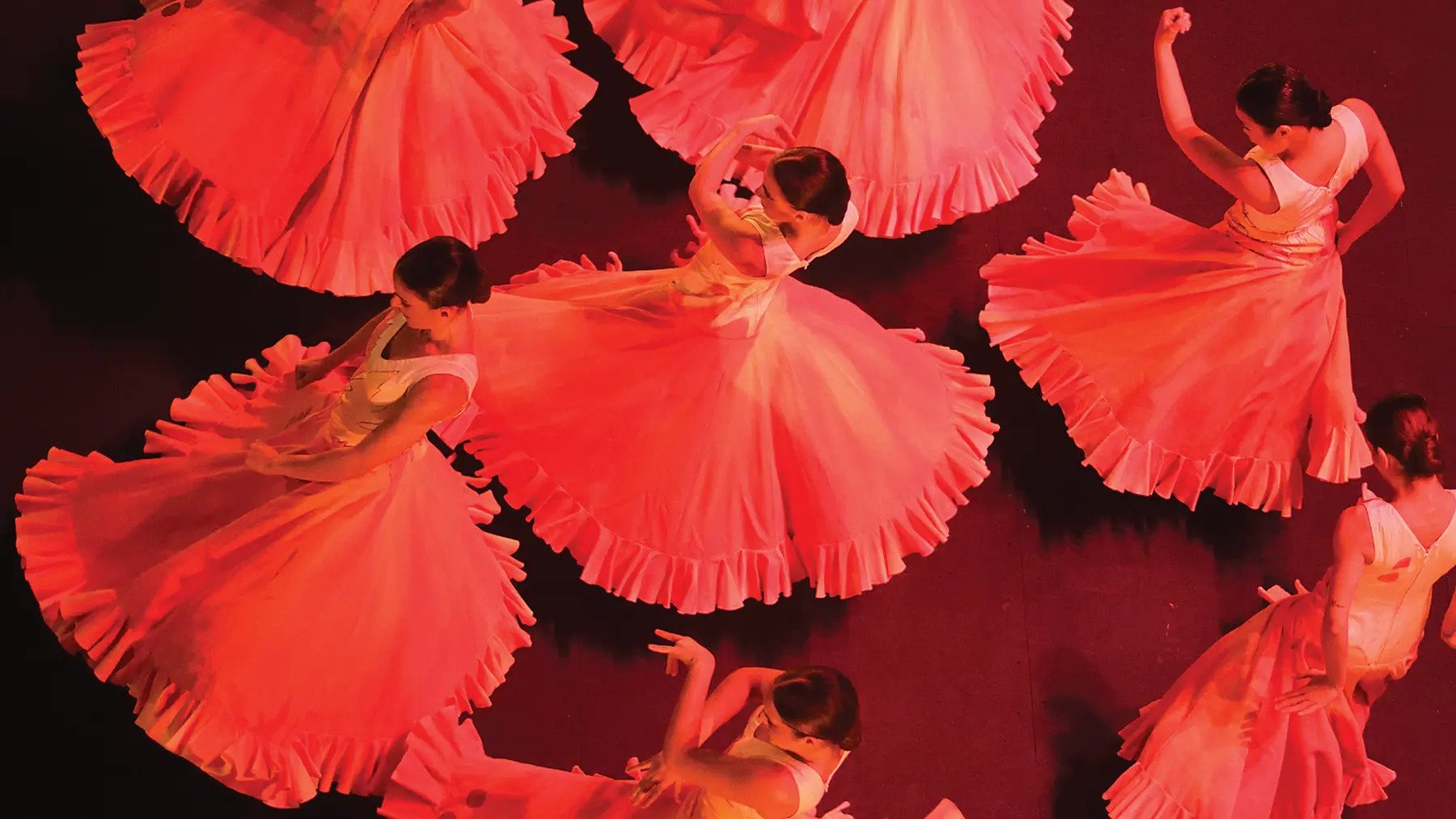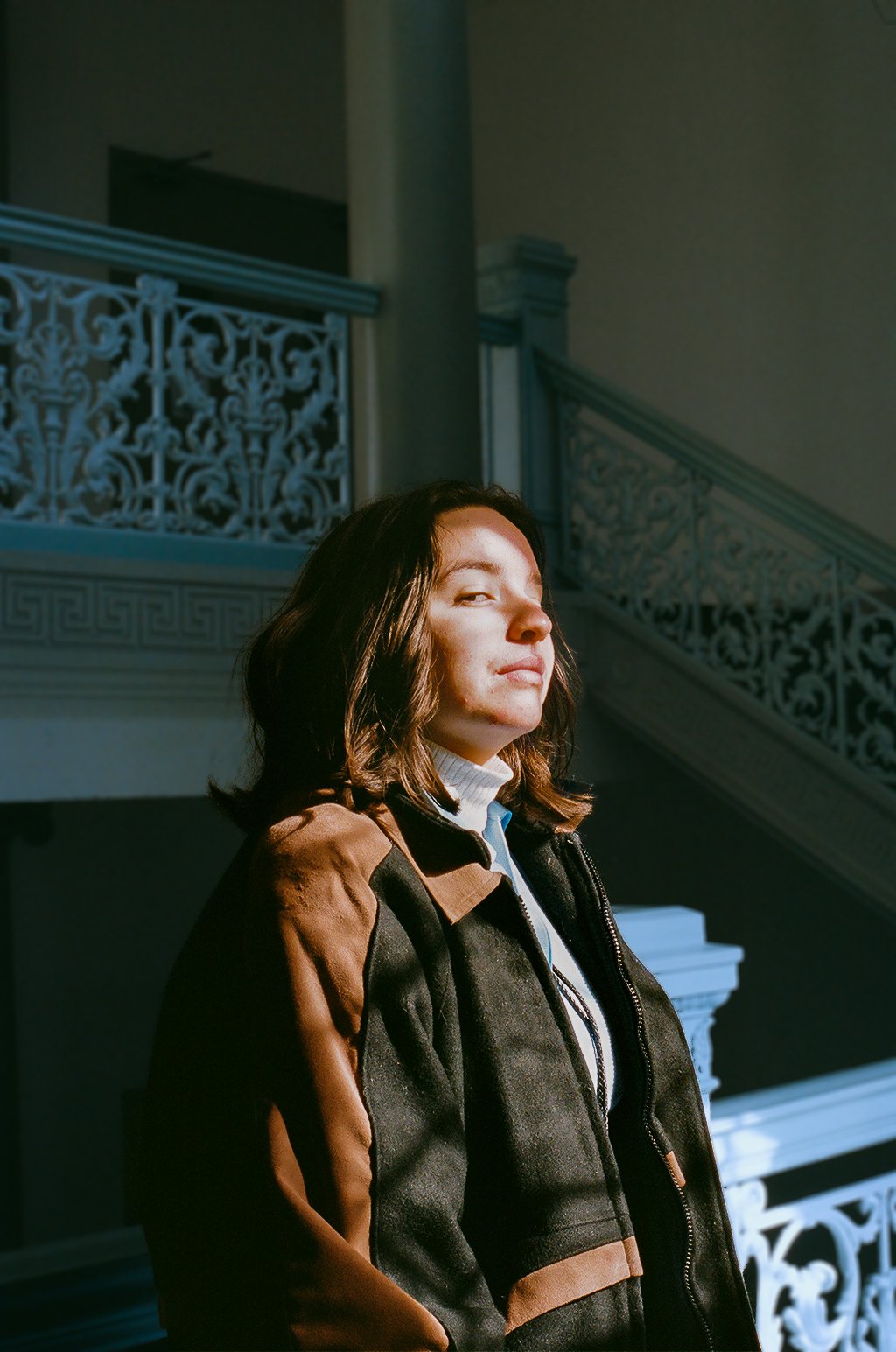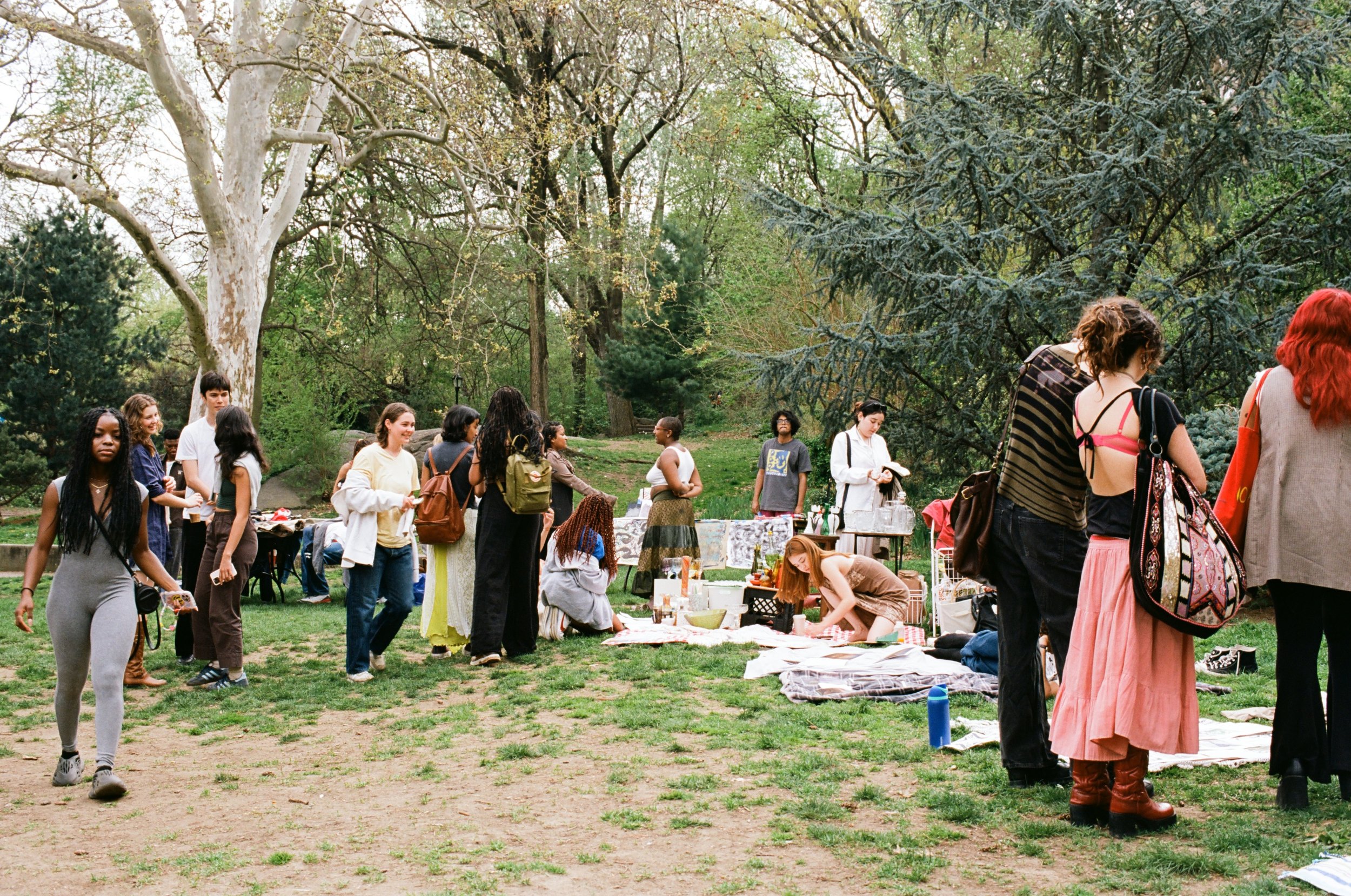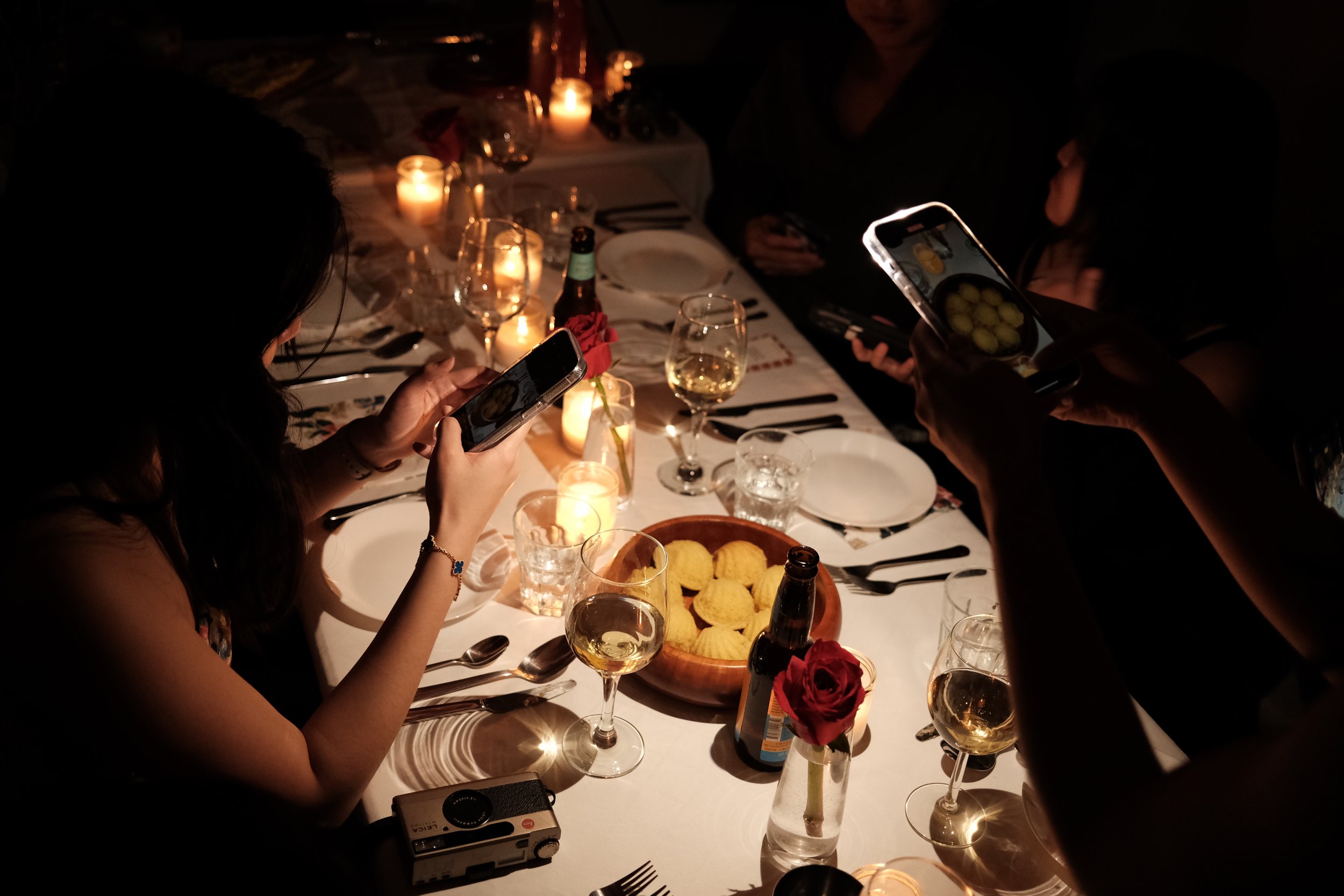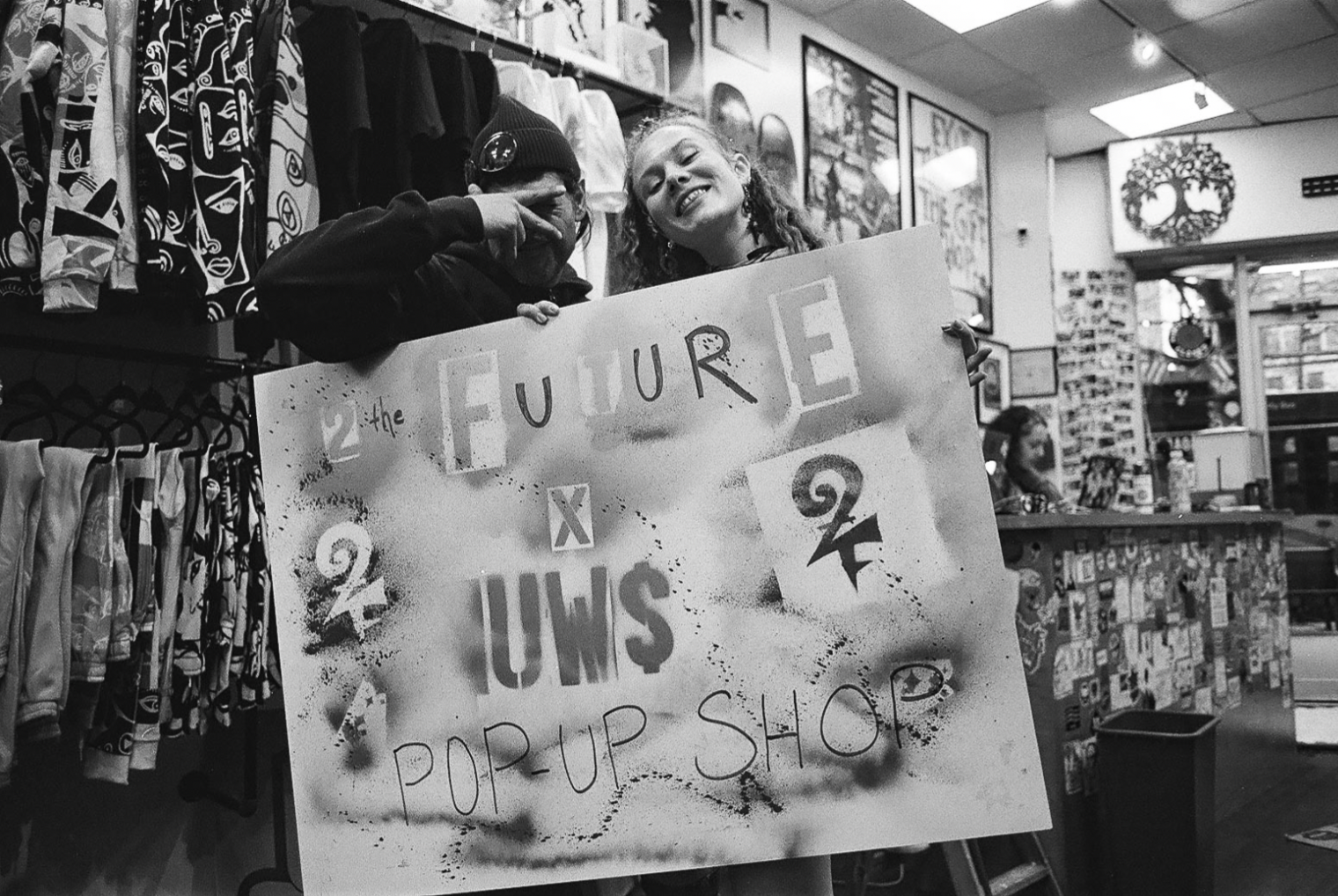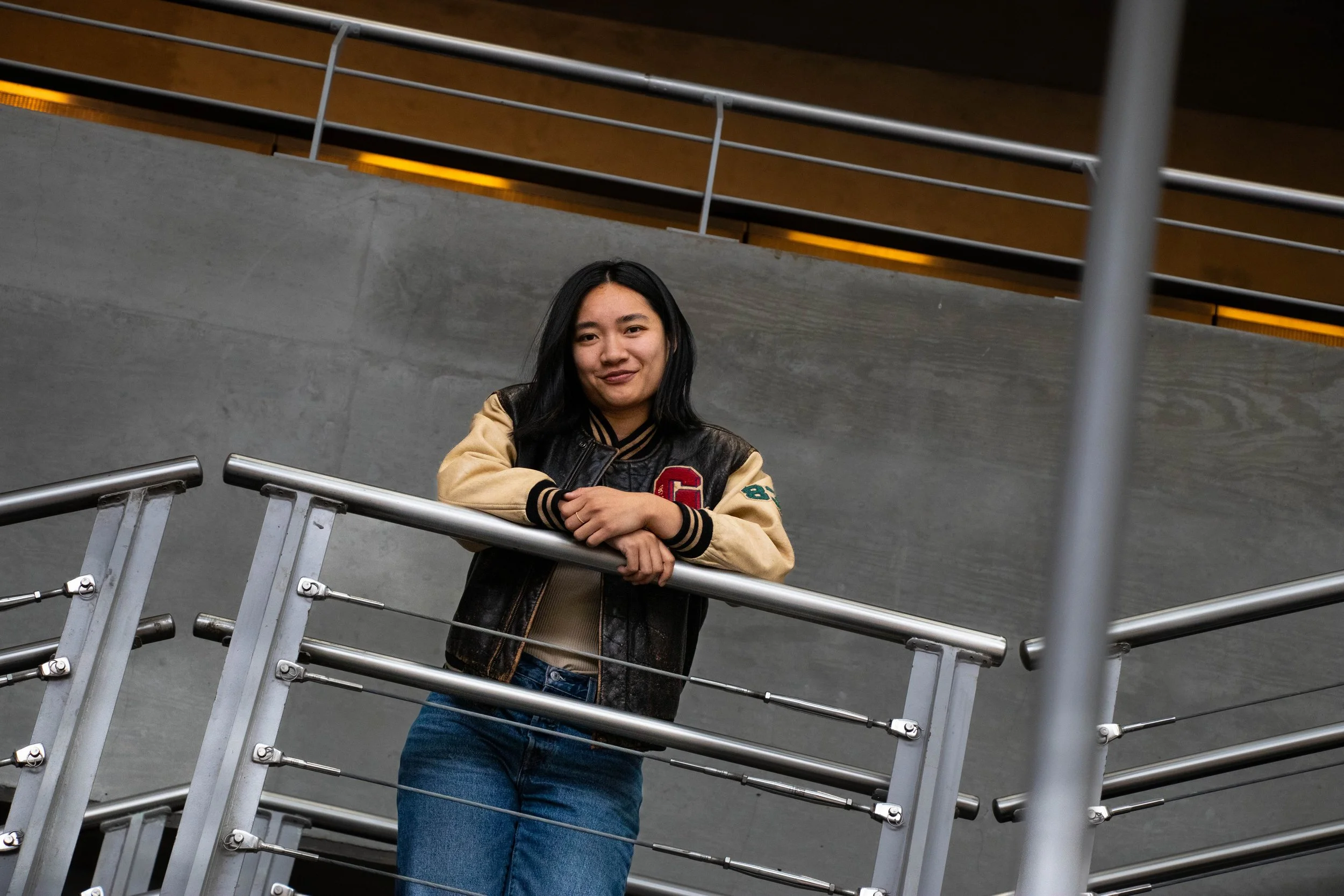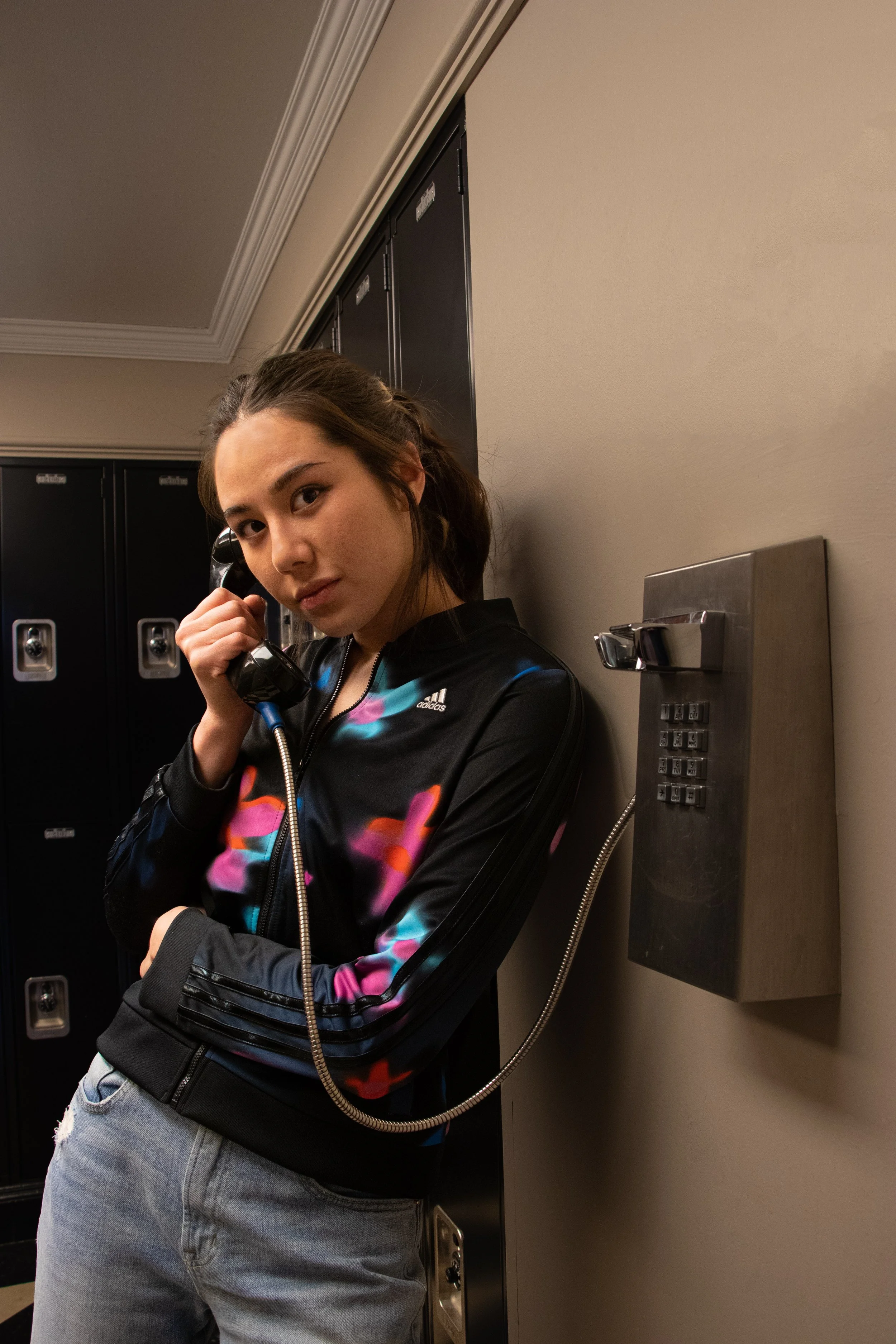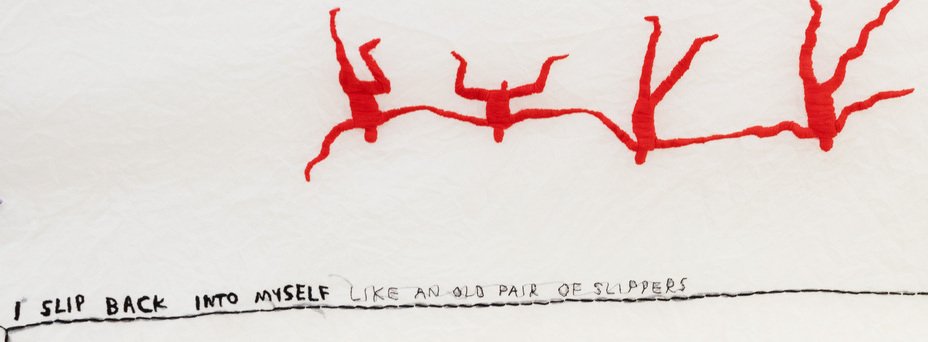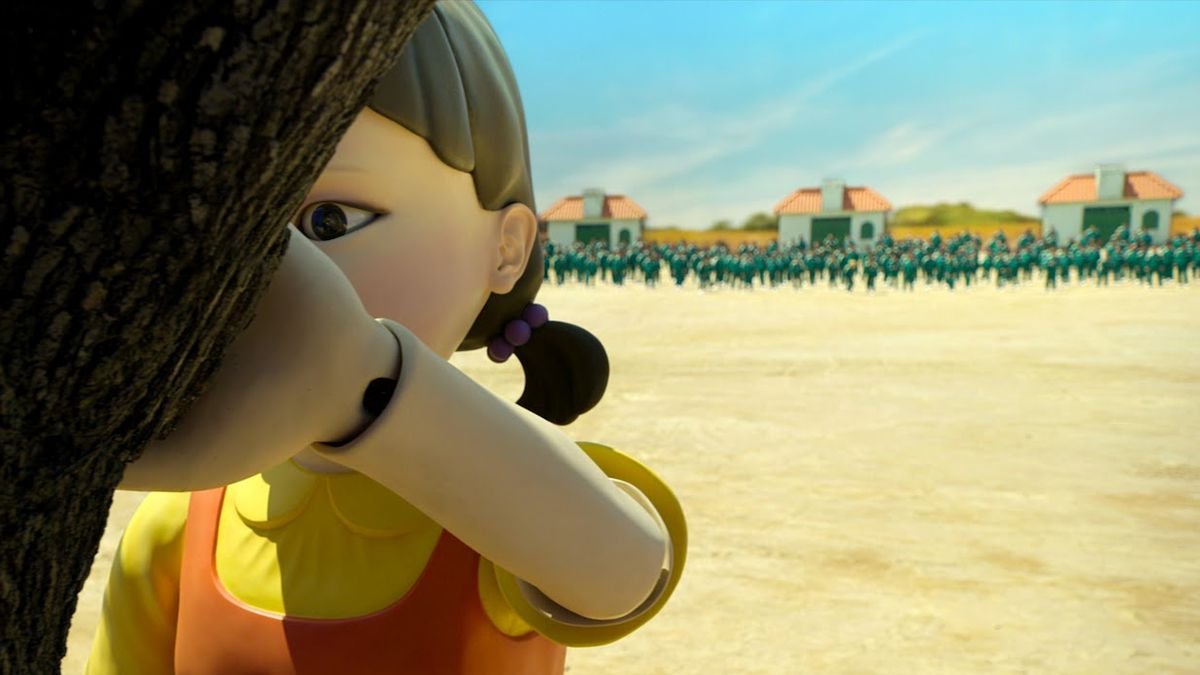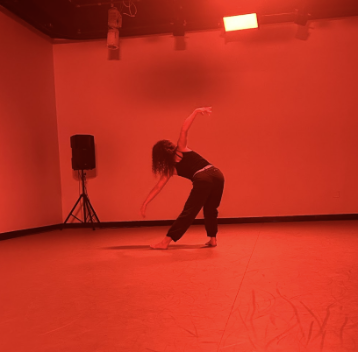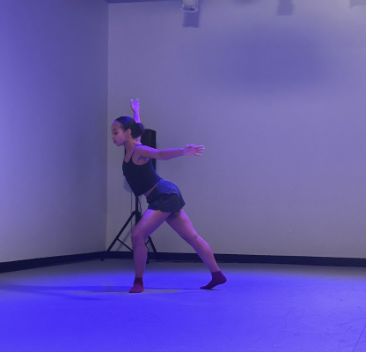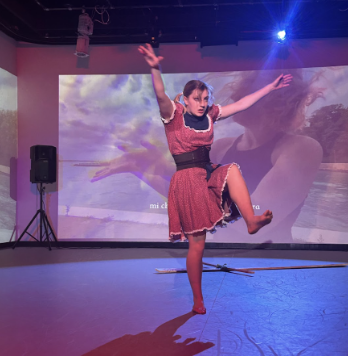Written by Emma Biswas
Upon entering the Movement Lab in Lower Level Milstein, I felt like I had been transported into a different world. I was asked to take my shoes off and place them in a cubby, something that was reminiscent of my middle school after-school dance classes. The lab itself was a whole different story. The green, orange, and purple lights bouncing off of the walls created a serene yet exciting atmosphere. I was expecting the Movement Lab to be similar to a dance studio; however, I realized that the room’s unique structure allowed for multimedia dance performances to take place, such as those in the CoLab showcase.
As more audience members filed into the performance space and sat on the lime green cushions given to us, I could feel the energy and excitement from the crowd. I have been to dance shows before, but this showcase was unique in that I was sitting directly on the ground that the dancers would be performing on – something that felt a lot more intimate. I watched as the members of CoLab were running around doing last-minute preparations for the showcase in the same area where the audience was chatting amongst themselves about the upcoming performances. Seeing the behind-the-scenes action take place right in front of my eyes was a novel experience.
As the lights dimmed, the bright white walls lit up with projections of a drawing animation and “Cherry-coloured Funk” by Cocteau Twins started to play. The members of the CoLab e-board began dancing about the lab, as an introduction to the showcase. Members were doing the worm, grinding against the floor, and doing handstands against the wall. There were even sound bites of the popular meme “oh that’s not” and “Partition” by Beyonce. Not a single audience member was silent – everyone was laughing hysterically.
The first dance of the showcase was a piece called “Still Rude,” choreographed by Effy Jo and performed by Effy Jo, Kristine Pham, Lauren Edwards, Rayna Leigh, and Shyenne Solis-Curiel. This upbeat dance was a great start to the showcase. The dancers were all dressed in white, which accentuated the powerful moves and hip-hop song playing in the background. Although the choreography was short, I was thoroughly impressed and enjoyed the whole experience, including the images displayed on the wall.
Switching gears, the piece “End Credits,” choreographed by Katie Sponenburg and performed by Liz Radway, gave me the sense of watching a music video from the 1980s. Liz wore bright blue, red, and yellow clothing, and the background was a projection of an old-fashioned television set, all of which was reminiscent of the funky aesthetic of the 80s. Throughout the piece, I was drawn to the way Liz used her arms and legs to create sharp lines and how she transitioned between fast and slow movements.
The next piece, “Right Now,” was another solo piece by Mia Generoso. This dance was a lot slower and more melancholic. The focus was solely on Mia, as the lights were dim and there were no projections on the wall. While watching the dancer, I felt that I was almost in slow motion with how precise and smooth Mia’s movements were. During the piece, I could hear her breathing through the instrumental music, creating a very intimate experience. I was also in awe of how Mia used her body as a medium of self-expression even while on the ground, given the limitations that come with it as the center of gravity changes. At the end of the piece, Mia starts breathing louder and spinning before hugging herself as the light dims:the perfect ending to such an expressive and intimate piece.
If I were to describe the piece “Be That Easy” in one word, it would be orange. In another solo dance, Carmen Allison dances to upbeat instrumental music while illuminated by orange lights. Beyond the lighting itself, both the music and the dance itself remind me of the color orange due to the simultaneous happiness and nostalgia. This lyrical dance is quite slow and flowy, something that feels very orange to me.
“Sister”, performed by Olivia Théard, is a piece with a wholly unique light. At the start, the music plays before the lights even go on. The instrumental starts with a single wind instrument, and the dancer moves to its rhythm. Olivia focuses a lot on the little details and movements of her hands as they flutter rapidly throughout the performance. Olivia moves across the entire space of the Movement Lab, and her movements begin to get faster and more upbeat as percussion takes over the music.
“Holy,” the last piece in the first act, is choreographed and performed by Lily Selthofner, who mentions that this piece is a smaller part of a larger performance. A giant cross is brought to the floor before the piece begins. While the dance starts, a story plays out on the screens behind her. The dancer on stage has abrupt and jerky movements that go along with the music. Another dancer is introduced in the video on screen. The cacophony of sounds starts to blend into one ringing tone. This piece is the longest one out of the ones performed so far and contains multimedia elements: writing, video, and dance. At times, the dancer reminds me almost of an animatronic because of the precise movements. Later on in the piece, the dancer utilizes the cross in her performance and charges at the audience, something that I felt really helped tell the story. Overall, I felt that this piece was overwhelming at times but still very artistic and expressive.
(“Still Rude” and “Right Now” are not pictured)
During the intermission, the audience was asked to move their cushions to reorient the stage from vertical to horizontal.
Act 2 starts out with a short film “Am I to go or I’ll Say so.” directed by Pimprenelle Behaeghel. It starts out with someone in the bathtub and then transitions between being in a pool and back to the bathtub, where the person is swimming in both. Some of the shots made me feel like I was in the water as well, and I couldn’t help but hold my breath during those moments.Regardless, I loved the transition between locations, and I noticed that many audience members were laughing while watching.
“Indwell” is a piece that incorporates both poetry and dance. The piece, choreographed by Parker Whitehead-Bust and performed by Tatiana Heintz, Idea Reid, and Sophia Sowinski, starts out with an animation of a robotic body projected on the walls. The voiceover of a poem, written by Mackenzie Whitehead, is like music as the robotic body begins to move around. As the projection switches to a galaxy background, three dancers dressed in black walk on and begin to dance. The performance starts slow and flowy but starts getting faster as the dancers start using their hands and shaking more. The music also becomes more upbeat. The performers used their arms and legs to move cyclically. At the end, one dancer remained on stage and performed a small solo before the robotic body was projected once more. The voiceover recites poetry once more in a soothing voice, and I remember the last lines: “be patient with yourself, you just got here.” “Indwell” was my favorite piece simply because of the mastery in the way that the performance seamlessly transitioned between poetry and dance.
“How To Sprain an Ankle,” a solo performance by Milly Hopkins, was another piece that impressed me with the use of both dance and speech. Milly comes on stage acting as a teacher speaking to her class – the audience. She shows a video on the walls that displays a dancer in a studio. As the piece continues, more and more “copies” of the dancer are seen in the video. Meanwhile, the teacher is teaching us about narrative authority, describing the video’s contents like a lecture. She says “I found myself only to lose myself,” which is a statement that intriguingly contradicts itself. As the title of the piece implies, the teacher is wearing an ankle brace, which she admits to the audience is a metaphor. Milly takes off her brace and her “teaching” clothes and reveals a flowy white dress underneath. She continues dancing while talking to the audience before finally asking us to choose an answer to a multiple-choice question projected on the floor. This piece felt very immersive and intimate, and I was very much in awe of Milly’s creation.
The next performance, “From Glass Mountain,” is a duet choreographed by Eva Thomas and performed by Ilana Cohen and Mary Zawalick. The dancers were often in separate areas of the space, one in the dark while the other was in the light. Their performance consisted of a lot of sharp movements that went well with the electronic movement. Later on, they begin dancing together. I enjoyed the performance; however, I felt that it did not speak to me in the same way that some of the others did.
“I’ll Turn your Sea to a Desert” is a performance to a compilation of three of Florence + the Machine’s songs. This was choreographed by Elizabeth Lee and performed by Elizabeth Lee, Celeste Funari Muse, Eva Strage, and Priscilla Zhu. The dancers wore long, flowing outfits that moved with the choreography. Their sharp and powerful moves were fitting for the percussive music. My favorite part of the performance was when the dancers began wringing at their clothes and hair as it felt very emotional and expressive. The dancers utilized the entire floor space as they traveled throughout the piece. When the music became faster, the performers started jumping, which caused the floor to vibrate. They ended the performance by all embracing each other in one heartwarming big hug.
The last piece, “Breaking Boundaries,” is a solo by Junyoung Kim. As the upbeat R&B song starts playing, Kim begins breakdancing in the middle of the floor. He does a lot of incredible moves and tricks that seem slow and fast at the same time–Junyoung makes moves look effortless.
CoLab ended the showcase by playing “Fruit Salad” by The Wiggles while the performers and choreographers all came onstage for a bow. The audience was free to greet their loved ones who performed while dancing about, ending the showcase on a silly, lighthearted note.

